CV outline - examples and tips
A CV outline can help you understand where your CV is going and how to fill it in. What do you need to know to create effective CV outlines?
A CV outline can help you understand where your CV is going and how to fill it in. What do you need to know to create effective CV outlines?
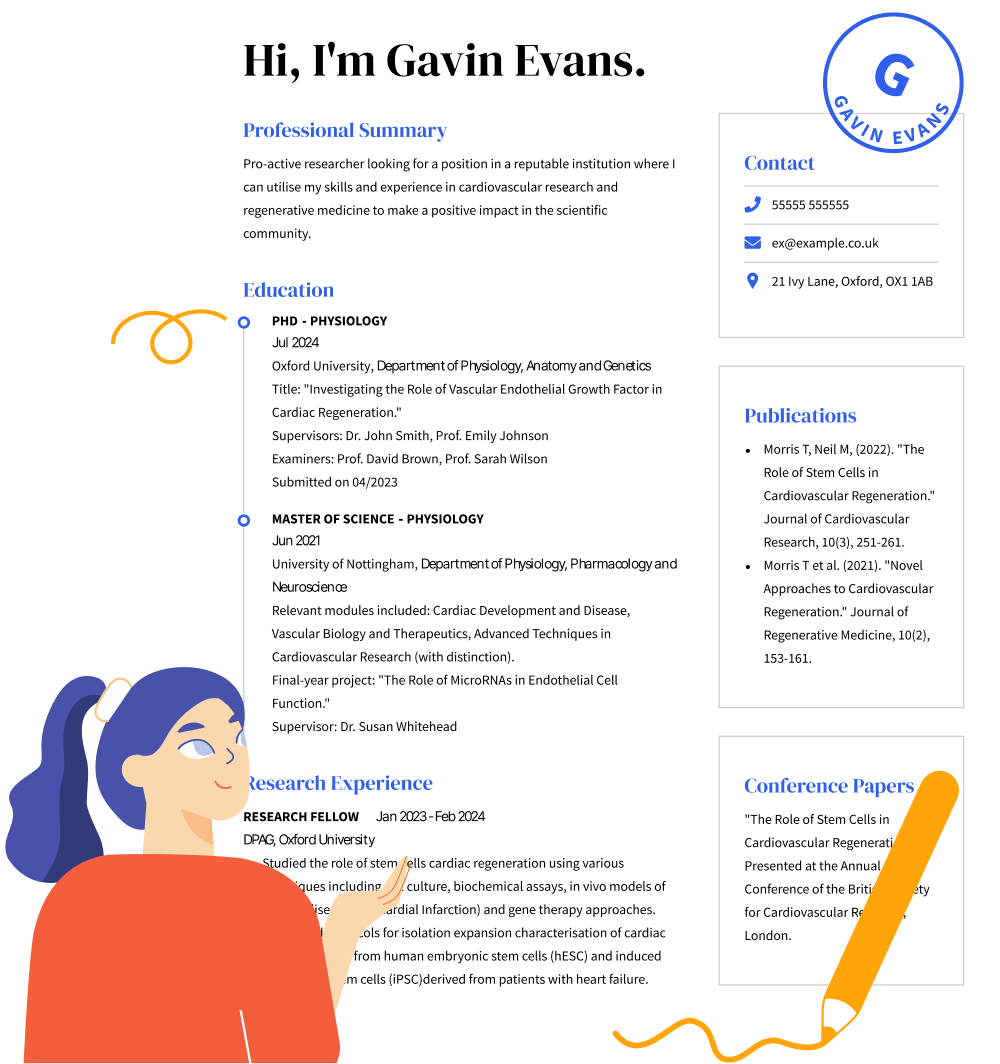
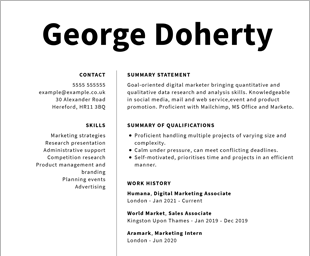
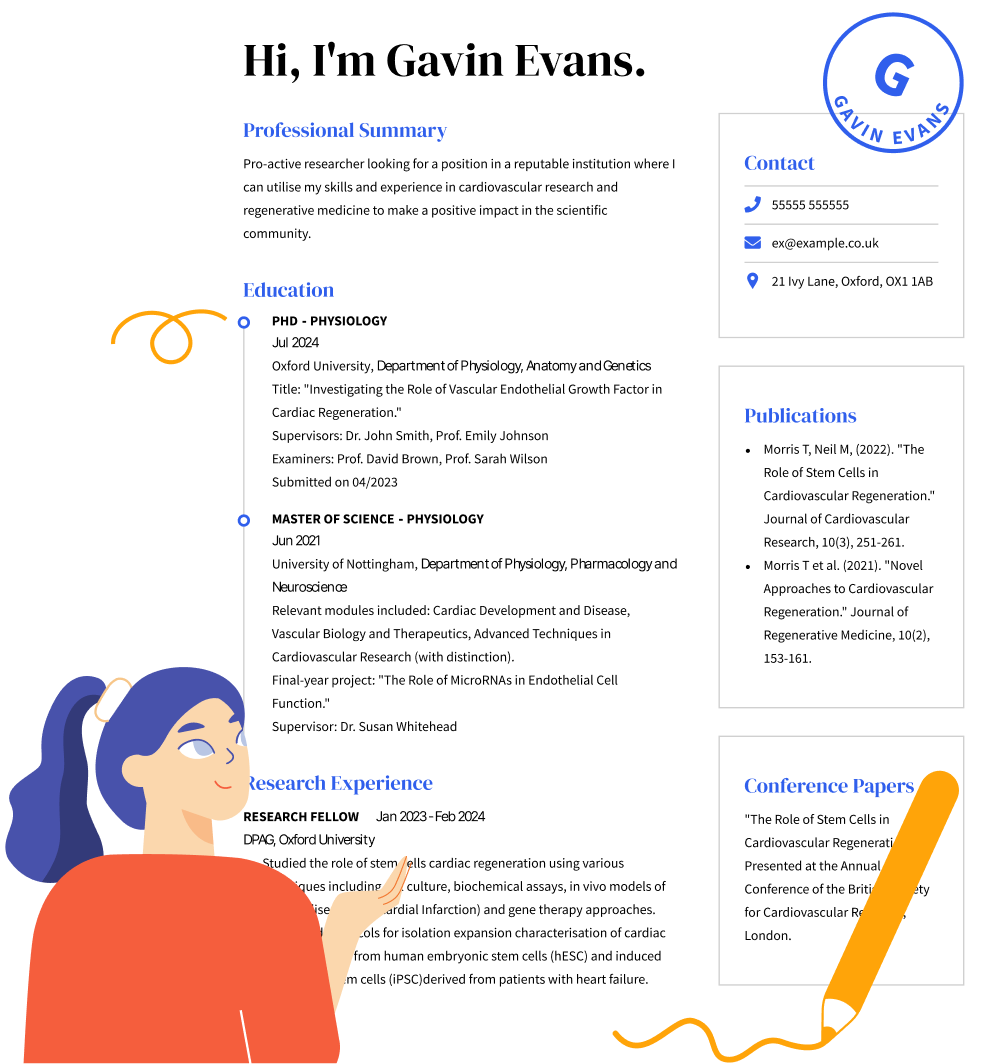
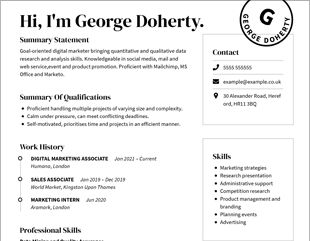
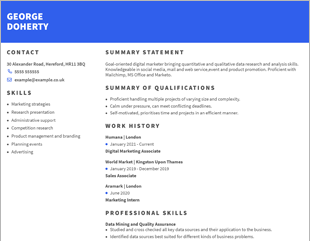
OUR USERS HAVE BEEN HIRED BY
Figuring out how to edit or even begin writing a CV is a valuable skill that begins like most great papers, with an outline. A CV outline is a template or format that maps out the general structure of your CV. It can help you determine where certain information will be placed and decide the format, design, and content for the perfect custom CV. By mapping out your CV, you can get an idea of how much space you have to work with and which sections you should emphasise to hiring managers and recruiters that will highlight not only that you’ve read the job description, but that you have the top qualities they’re looking for.
A good CV outline can help job seekers organise their thoughts and get an idea of what their most important skills and qualifications are but if you’ve never written a CV or an outline before we can help you with the expert advice below by providing you with:
Heading:
John Smith
Address: 30 Overton Circle, Liverpool L3 8HB
Phone Number: 07912345678
Professional Email: example@example.com
LinkedIn Profile (or portfolio link)
Introduction: (your professional summary or objective statement)
Example of an objective statement:
Creative [Job Title] with talent for [skills noted in job description]. Adept at [relevant soft skills]. Looking for [how Company’s position can help with career goal].
Example of a professional summary:
Deadline-driven [Job Title] focused on overseeing projects from concept through final delivery. Successful at [skills noted in job description]. Highly effective at [relevant soft skills]. Looking to help achieve [Company’s Name]’s goals and take on more responsibility.
Relevant Skills:
Hard Skill #1
Hard Skill #2
Hard Skill #3
Soft Skill #1
Soft Skill #2
Soft Skill #3
Work History:
Education:
Degree Name / Major
University, Location | Start Date – End Date
Additional Sections:
Whether you are fresh out of school or you are looking to progress in your career, the basic outline of your CV will be the same. All of the CV samples you’ll find online during your job search have:
The header of your CV should include your full name and your contact information. You should include your phone number and your email address, as well as links to professional social media pages such as your LinkedIn profile. This section should be at the very top of your CV.
Your professional summary or objective should generally be the shortest section of your CV. The point of the summary statement or objective is to give recruiters a brief snapshot of who you are and what you offer.
For example, someone seeking a job as a flight attendant might write:
“Experienced flight attendant with 15 years of experience seeking to utilise my skills and expertise in the position of [job title] within [company name]. An adaptable worker with excellent people skills seeking to maintain guest happiness and help [company name] maintain their outstanding reputation.”
Your professional summary or objective should be personalised to your background and skills, of course, but also to the job application you are applying to.
Depending on which CV format you choose, the skills section may be the largest in your CV. That’s certainly the case in a functional CV format, where your skills section will be the focus. This format is best for people with a sporadic or limited work history, such as recent graduates. Regardless of format, this section should include the soft skills, hard skills, technical skills, and qualifications that are most relevant to the job you are applying for. Use columns of bullet points to list your skills and maximise the space you have.
The work experience section is exactly what it sounds like — the section that details your professional experience. Though this section is largely for job experience, you can also include relevant volunteer experience, internships and extracurricular activities in your work history if they relate to your desired job. If you have a lot of professional experience and are applying for a job that values it, you should opt for a traditional chronological CV. In general, you should stick to the last 10 years of work experience and think of three to five important responsibilities or achievements for each job you’ve had.
This section should contain your academic achievements and professional certifications. Unless you want to point out specific awards or courses of study that connect with the job you want, this section will be relatively brief.
In addition to the basic CV sections above it is important to solidify your network connections and experience by showcasing your certifications or relevant affiliations.
If applicable to the specific application, you may want to include:
The best CV is one that takes these basic elements and tailors them to suit the skill set and qualifications of the job seeker. For example, if you have a limited or sporadic work history, write your outline as a functional CV, which stresses skills and qualifications, rather than a traditional chronological CV, which emphasises work experience.
The perfect CV for a job application will have the right skills and experiences to grab recruiters’ attention and are friendly to applicant tracking systems (ATS), which scan CVs for the text that fits what the job needs. Most importantly, a good CV should present your strengths. As you fill out your CV writing outline there are some things you should keep in mind to personalise it and give yourself the best chance of success. You can change your CV outline to suit your needs in a number of ways. These are:
The sections that show your skills and experience in the best possible light should take precedence in your CV. The outlining process involves putting your best skills front and centre in your document, with those selected attributes determining which CV format you should choose from. There are three main types of CV formats that your CV outline can become: chronological, combination and functional. Deciding which works best depends on the skills you need to highlight for the role, your education, work experiences and any shifts you may have had in your career.
The best thing to do when making your CV outline is to take a close look at the job description for the position you’re interested in as it will tell you the skills, years of experience, and required knowledge needed to do the job. This is also the measure to which your document will be compared. This will also help you find the right keywords and phrases to carefully work into your CV so that, even without an extensive work history, you can still make it past their ATS.
A professional CV should have the right look and your best bet for having your CV get into the hands of a recruiter is to present a straightforward, polished layout. The length of your document should be up to two pages maximum for experienced job seekers, with one page fitting the standard for most applicants. Choose a font that is legible, simple and professional-looking. Sans serif fonts like Arial are the best choices and should stay between 10.5 and 12 in size. Likewise, the margins should be between 0.5 to one inch all around.
If you make sure you have a good outline and you personalise your CV to suit your skills and experience, as well as the job description you are applying for, you will have a good chance of getting job interviews and opportunities. For even more inspiration to write your CV, cheque out the many CV examples and samples available on CVHelp.
Now that you’ve made sure you have a great CV outline you can begin personalising your document to suit your skills and experience, as well as the job description you are applying for. CVHelp has a wealth of resources available so that you can choose the ideal design and format for your industry.
Cheque out these helpful tools, including our CV writing guide!
If you want to make the best impression with your CV or need some inspiration for your outline then, CVHelp has many resources which could help you through their set of versatile and well-designed templates that can help your documents be professional and readable. That way you can create the perfect CV for your next job opportunity.
Cheque out these resources if you are looking for just the right way to present your CV or want to view other examples from related jobs in your industry:
All good CVs follow certain outlines, whether you follow one manually or use a pre-built CV format. You can make your life easier by using a professional CV builder such as the one offered by CVHelp.
The sections you include or create for your CV should be determined by the jobs you are applying for and your own educational and work experience. Depending on what industry you work in and what kind of skills you have, you can get an advantage by creating sections for:
The sections you include or create for your CV should be determined by the jobs you are applying for and your educational and work experience. Depending on what industry you work in and what kind of skills you have, you can get an advantage by creating sections for:
If you have anything that can fit into these kinds of sections that is relevant to the jobs you are applying for, it may be beneficial to include them in your CV.
If you have anything that can fit into these kinds of sections that is relevant to the jobs you are applying for, it may be beneficial to include them in your resume.
No. Unless the job description calls for references to be included on your CV, hiring managers know they can request references from you directly. Keep a separate references list handy so you can submit it when needed.
A Good CV outline is one that completes its goal. Whether that means seeing if you are qualified for a role you want to apply to immediately, you’re charting your relevant skills and career experiences for a future position, or you’re creating a document for your current employer so that they can see your level of growth for a raise of promotion. Each of these examples requires you to know what hard and soft skills are the most relevant and how to highlight the right work experiences and training that will showcase your best career features.
Your CV should be composed of these five basic sections: A header that shows off your most recent contact information, a professional summary or objective statement, your work history, relevant skills and education.
The order and features showcased in these sections vary by what the job posting wants to be highlighted and by your level of experience. Deciding how to format your CV and which of the CV formats would work best for you (functional, combination, and chronological) is a great way to establish a CV outline that you can modify for all of your upcoming applications.
In the U.S., a CV is a detailed and long overview of your entire professional career. It can be as long as 10 pages depending on your industry and the requirements necessary. Some academic fields will require you to submit an academic CV instead of a resume, so make sure to look up the requirements for that specific field, as not all CVs will be written the same way.
On the other hand, a resume will be shorter, one to two pages max, as it will follow the standard formatting guidelines of the five basic resume sections mentioned above.
In the UK, a CV has the same function as a U.S. resume.
The experiences you list on your CV should be the ones that are most relevant to the skills being sought after in the job description. You also want to choose recent experiences over ones that are more than five years out of date.
For example, if you are applying for an administration position then you’ll want to highlight experiences that show you are good are working with people, can perform basic data entry and have great organisational skills so a cashier job and volunteering with a reading group would be good experiences to highlight in your CV or cover letter, while being eighth-grade basketball champion does not necessarily show off the skill the employer is looking for.
If you want to see the latest industry examples then cheque out CVHelp’s collection of CV samples.
We personalize your experience.
We use cookies in our website to ensure we give you the best experience, get to know our users and deliver better marketing. For this purpose, we may share the information collected with third parties. By clicking “Allow cookies” you give us your consent to use all cookies. If you prefer to manage your cookies click on the “Manage cookies” link below.